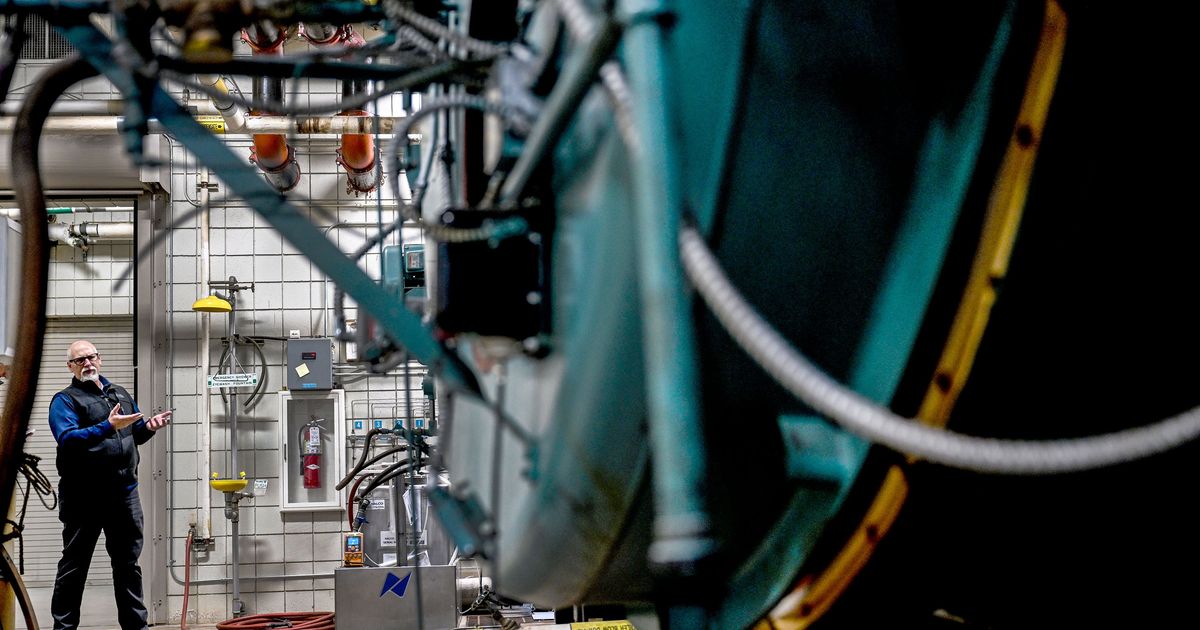Spokane County spending $625k on energy efficiency audit
Spokane County spending $625k on energy efficiency audit The Spokesman Review


Spokane County to Upgrade Energy Infrastructure in Line with Sustainable Development Goals

Introduction
Spokane County, located in Washington state, is taking steps to upgrade its energy infrastructure in line with the Sustainable Development Goals (SDGs). The county’s current heating plant, which consists of four large boilers, is outdated, inefficient, and does not align with the state’s Clean Buildings Act passed in 2019. This act aims to reduce energy consumption and greenhouse gas emissions by establishing efficiency standards for buildings larger than 50,000 square feet.
Energy Efficiency Audit and Plan
In order to comply with the new regulations and improve energy efficiency, Spokane County has approved a $625,000 contract with consultant Johnson Controls. The consultant will conduct an audit of the county’s buildings and develop an energy savings plan. This plan will outline the necessary upgrades and improvements to increase energy efficiency in several large buildings, including the courthouse and jail.
Opportunity for Improvement
While the state legislation is requiring Spokane County to make these changes, Facilities Director Gil Haubert sees it as an opportunity for improvement. The current heating and cooling infrastructure system, including the boilers, is in need of upgrades regardless of the legislation. Haubert believes that investing in new systems, such as decentralized boilers in each building, will not only meet the energy efficiency requirements but also provide long-term benefits.
Outdated Infrastructure
The current centralized heating plant was built in the late 1980s as a response to the phasing out of steam supply from Washington Water Power’s Steam Plant. However, the boilers in the county’s heating plant are now only about 60% efficient and have failing insulated linings. This results in wasted heat and energy. New boiler systems are approximately 90% efficient and would significantly reduce energy waste.
Financial Implications
While the cost of upgrading the energy infrastructure is estimated to be between $10-15 million, the county would see substantial savings in gas and electricity expenses. It is projected that the annual savings would amount to around $500,000. Spokane County Commissioner Chris Jordan believes that these upgrades could lead to long-term financial benefits for taxpayers and the workforce, while also promoting energy efficiency.
Conclusion
Spokane County’s efforts to upgrade its energy infrastructure align with the SDGs, particularly Goal 7: Affordable and Clean Energy and Goal 13: Climate Action. By improving energy efficiency and reducing greenhouse gas emissions, the county is contributing to a more sustainable future. The implementation of decentralized boilers and other energy-saving measures will not only meet regulatory requirements but also result in long-term cost savings and environmental benefits.
SDGs, Targets, and Indicators Analysis
1. Which SDGs are addressed or connected to the issues highlighted in the article?
- SDG 7: Affordable and Clean Energy
- SDG 11: Sustainable Cities and Communities
- SDG 13: Climate Action
The article discusses the need for energy efficiency improvements in Spokane County’s buildings, specifically the courthouse and jail. This aligns with SDG 7, which focuses on ensuring access to affordable, reliable, sustainable, and modern energy for all. Additionally, the article mentions the goal of reducing greenhouse gas emissions, which is connected to SDG 13, which aims to take urgent action to combat climate change and its impacts. Finally, the article highlights the need for sustainable cities and communities, which is addressed by SDG 11.
2. What specific targets under those SDGs can be identified based on the article’s content?
- Target 7.3: By 2030, double the global rate of improvement in energy efficiency
- Target 11.6: By 2030, reduce the adverse per capita environmental impact of cities, including by paying special attention to air quality and municipal and other waste management
- Target 13.2: Integrate climate change measures into national policies, strategies, and planning
The article emphasizes the need for energy efficiency improvements in Spokane County’s buildings, which aligns with Target 7.3 of SDG 7. The goal is to double the global rate of improvement in energy efficiency by 2030. Additionally, the article mentions the adverse environmental impact of inefficient energy infrastructure, which connects to Target 11.6 of SDG 11. The target aims to reduce the per capita environmental impact of cities. Finally, the article highlights the need to integrate climate change measures into planning, which aligns with Target 13.2 of SDG 13.
3. Are there any indicators mentioned or implied in the article that can be used to measure progress towards the identified targets?
- Indicator 7.3.1: Energy intensity measured in terms of primary energy and GDP
- Indicator 11.6.1: Proportion of urban solid waste regularly collected and with adequate final discharge out of total urban solid waste generated, by cities
- Indicator 13.2.1: Number of countries that have communicated the establishment or operationalization of an integrated policy/strategy/plan which increases their ability to adapt to the adverse impacts of climate change and foster climate resilience and low greenhouse gas emissions development in a manner that does not threaten food production
The article does not explicitly mention specific indicators, but we can infer some indicators based on the targets identified. For Target 7.3, an indicator could be energy intensity measured in terms of primary energy and GDP (Indicator 7.3.1). This indicator would measure the progress in improving energy efficiency. For Target 11.6, an indicator could be the proportion of urban solid waste regularly collected and adequately discharged (Indicator 11.6.1). This indicator would measure the progress in reducing the environmental impact of cities. For Target 13.2, an indicator could be the number of countries that have established or operationalized integrated policies/strategies/plans for climate change adaptation and low greenhouse gas emissions development (Indicator 13.2.1). This indicator would measure the progress in integrating climate change measures into national policies and planning.
4. Table: SDGs, Targets, and Indicators
| SDGs | Targets | Indicators |
|---|---|---|
| SDG 7: Affordable and Clean Energy | Target 7.3: By 2030, double the global rate of improvement in energy efficiency | Indicator 7.3.1: Energy intensity measured in terms of primary energy and GDP |
| SDG 11: Sustainable Cities and Communities | Target 11.6: By 2030, reduce the adverse per capita environmental impact of cities, including by paying special attention to air quality and municipal and other waste management | Indicator 11.6.1: Proportion of urban solid waste regularly collected and with adequate final discharge out of total urban solid waste generated, by cities |
| SDG 13: Climate Action | Target 13.2: Integrate climate change measures into national policies, strategies, and planning | Indicator 13.2.1: Number of countries that have communicated the establishment or operationalization of an integrated policy/strategy/plan which increases their ability to adapt to the adverse impacts of climate change and foster climate resilience and low greenhouse gas emissions development in a manner that does not threaten food production |
Behold! This splendid article springs forth from the wellspring of knowledge, shaped by a wondrous proprietary AI technology that delved into a vast ocean of data, illuminating the path towards the Sustainable Development Goals. Remember that all rights are reserved by SDG Investors LLC, empowering us to champion progress together.
Source: spokesman.com

Join us, as fellow seekers of change, on a transformative journey at https://sdgtalks.ai/welcome, where you can become a member and actively contribute to shaping a brighter future.







